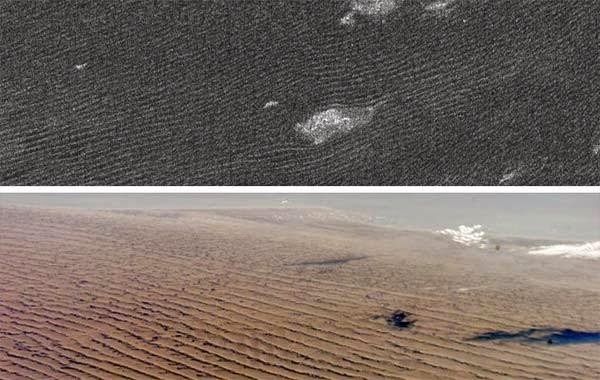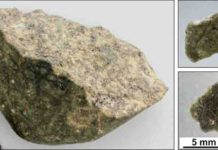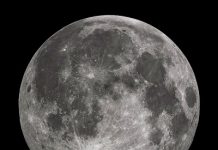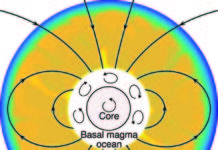
Titan, Saturn’s largest moon, is a peculiar place. Unlike any other moon, it has a dense atmosphere. It has rivers and lakes made up of components of natural gas, such as ethane and methane. It also has windswept dunes that are hundreds of yards high, more than a mile wide and hundreds of miles long — despite data suggesting the body to have only light breezes.
Research led by Devon Burr, an associate professor in Earth and Planetary Sciences Department at the University of Tennessee, Knoxville, shows that winds on Titan must blow faster than previously thought to move sand. The discovery may explain how the dunes were formed.
The findings are published in the current edition of the academic journal Nature.
A decade ago, Burr and other scientists were amazed by the Cassini spacecraft’s pictures of Titan that showed never-before-seen dunes created by particles not previously known to have existed.
“It was surprising that Titan had particles the size of grains of sand — we still don’t understand their source — and that it had winds strong enough to move them,” said Burr. “Before seeing the images, we thought the winds were likely too light to accomplish this movement.”
The biggest mystery, however, was the shape of the dunes. The Cassini data showed that the predominant winds that shaped the dunes blew from east to west. However, the streamlined appearance of the dunes around obstacles like mountains and craters indicated they were created by winds moving in exactly the opposite direction.
To get to the bottom of this conundrum, Burr dedicated six years to refurbishing a defunct NASA high-pressure wind tunnel to recreate Titan’s surface conditions. She and her team then turned up the tunnel’s pressure to simulate Titan’s dense atmosphere, turned on the wind tunnel fan, and studied how the experimental sand behaved. Because of uncertainties in the properties of sand on Titan, they used 23 different varieties of sand in the wind tunnel to capture the possible sand behavior on Titan.
After two years of many models and recalibrations, the team discovered that the minimum wind on Titan has to be about 50 percent faster than previously thought to move the sand.
“Our models started with previous wind speed models but we had to keep tweaking them to match the wind tunnel data,” said Burr. “We discovered that movement of sand on Titan’s surface needed a wind speed that was higher than what previous models suggested.”
The reason for the needed tweaking was the dense atmosphere. So this finding also validates the use of the older models for bodies with thin atmospheres, like comets and asteroids.
The discovery of the higher threshold wind offers an explanation for the shape of the dunes, too.
“If the predominant winds are light and blow east to west, then they are not strong enough to move sand,” said Burr. “But a rare event may cause the winds to reverse momentarily and strengthen.”
According to atmospheric models, the wind reverses twice during a Saturn year which is equal to about 30 Earth years. This reversal happens when the sun crosses over the equator, causing the atmosphere — and subsequently the winds — to shift. Burr theorizes that it is only during this brief time of fast winds blowing from the west that the dunes are shaped.
“The high wind speed might have gone undetected by Cassini because it happens so infrequently.”
This research was supported by grants from NASA’s Planetary Geology and Geophysics Program and the Outer Planets Research Program. A new grant will allow Burr and her colleagues to examine Titan’s winds during different climates on Titan as well as the effect of electrostatic forces on the sand movement.
Burr’s team included UT Earth and Planetary Sciences Assistant Professor Josh Emery as well as colleagues from the Johns Hopkins University Applied Physics Laboratory, SETI Institute, Arizona State University, and the University of California, Davis.
Reference:
Devon M. Burr, Nathan T. Bridges, John R. Marshall, James K. Smith, Bruce R. White, Joshua P. Emery. Higher-than-predicted saltation threshold wind speeds on Titan. Nature, 2014; DOI: 10.1038/nature14088
Note : The above story is based on materials provided by University of Tennessee.










